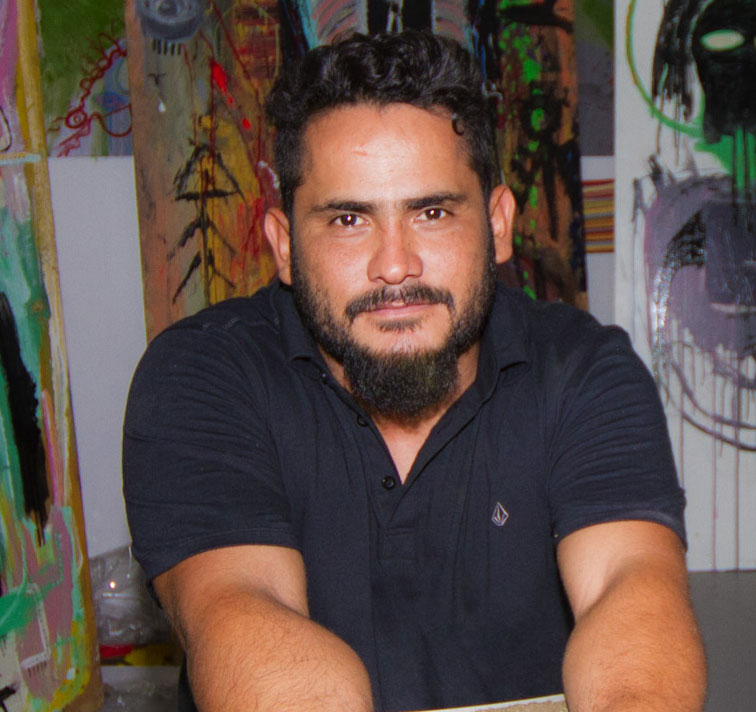American artist Emilio Martinez was born in Tegucigalpa, Honduras, in 1981 and immigrated with his family to Miami, USA, in 1994, where he has resided ever since.
Emilio has adopted painting as his means of expression. His work comes to life through the presence of the dream realm – created by the constant repetitive dreams of his childhood memories. The work comes to life through the bicultural puzzle he decodes daily.
As a child, he used a sketchbook in which he recorded his obsessions, passions and fears. Macabre fantasies of fanged beasts and shadowy figures unfold on the busy surfaces of the paintings, depicted in a visual language of bold brushstrokes influenced by 20th-century figurative expressionism.
Carrying the same humanistic verve as this stylistic predecessor, these works convey a heavy emotion reflecting the uncomfortable and sometimes violent conditions of their time. In light of this, there’s an allegorical quality to his work, where nightmarish images conceal a fantasy evocative of cautionary tales and fairy tales. And just as Lennie, the physically imposing character in John Steinbeck’s “Of Mice and Men”, innocently commits a terrible deed, or Mary Shelley’s Frankenstein reveals the monster to be more human than those who abuse him, his works encourage viewers to heed the old adage that appearances are often deceiving.
Emilio Martinez also treats art history as another morally nebulous character to be questioned, prodded and rethought. He positions himself within these narratives, ripping out pages from art history books (on Western canons, Old Masters, modernism) and affixing them to his canvases, painting over texts and images, often revising and reinterpreting well-known works using his visual lexicon.
His paintings question the ambiguous moralities endemic to humanity, and how things are rarely what they seem. How can a beautiful scene camouflage horrors; while ugliness can prevent us from seeing virtue, charm and merit hidden just beneath the surface? In his pictorial practice, Martinez freely navigates these zones of nuance, creating in his works frameworks for introspection into motivations and intentions – whether good or bad, or somewhere in between. He leads his audience to ask the same questions far beyond the confines of these works.
“It’s like giving birth,” Emilio Martinez will say when asked about his artistic process. “The idea is conceived, and the moment it’s ready to be born, it’s born. He moves forward unhurriedly, deliberately feeling and questioning, all the while drawing on memories and observations that will prove fruitful when the time comes to let his vision unfold. – Maria Gabriela Di Giammarco, writer, anthropologist, curator “My characters have no nationality, race or social norms that divide them. On the contrary, they are presented as equal and beautiful in their own reality.” Emilio Martinez


